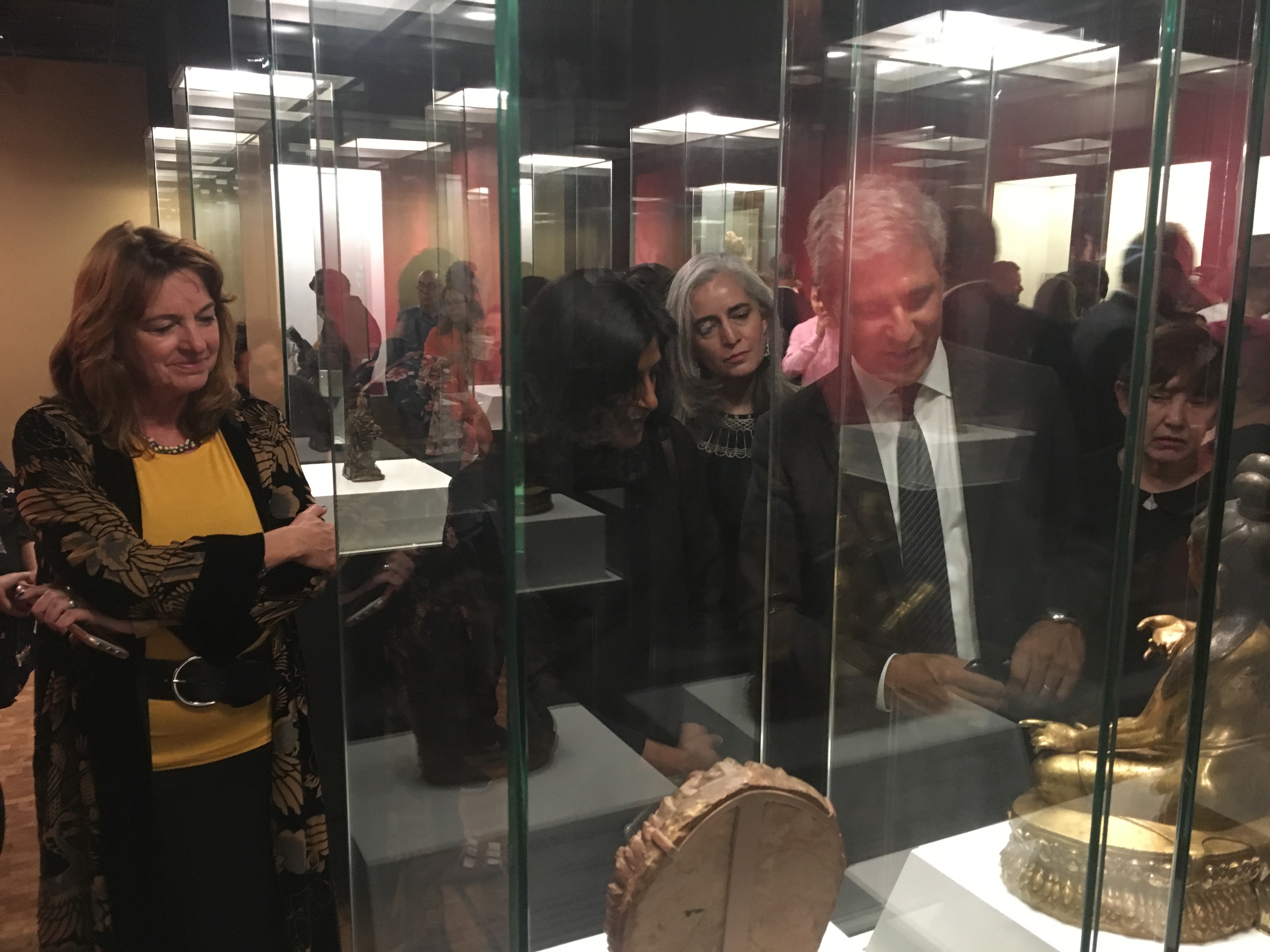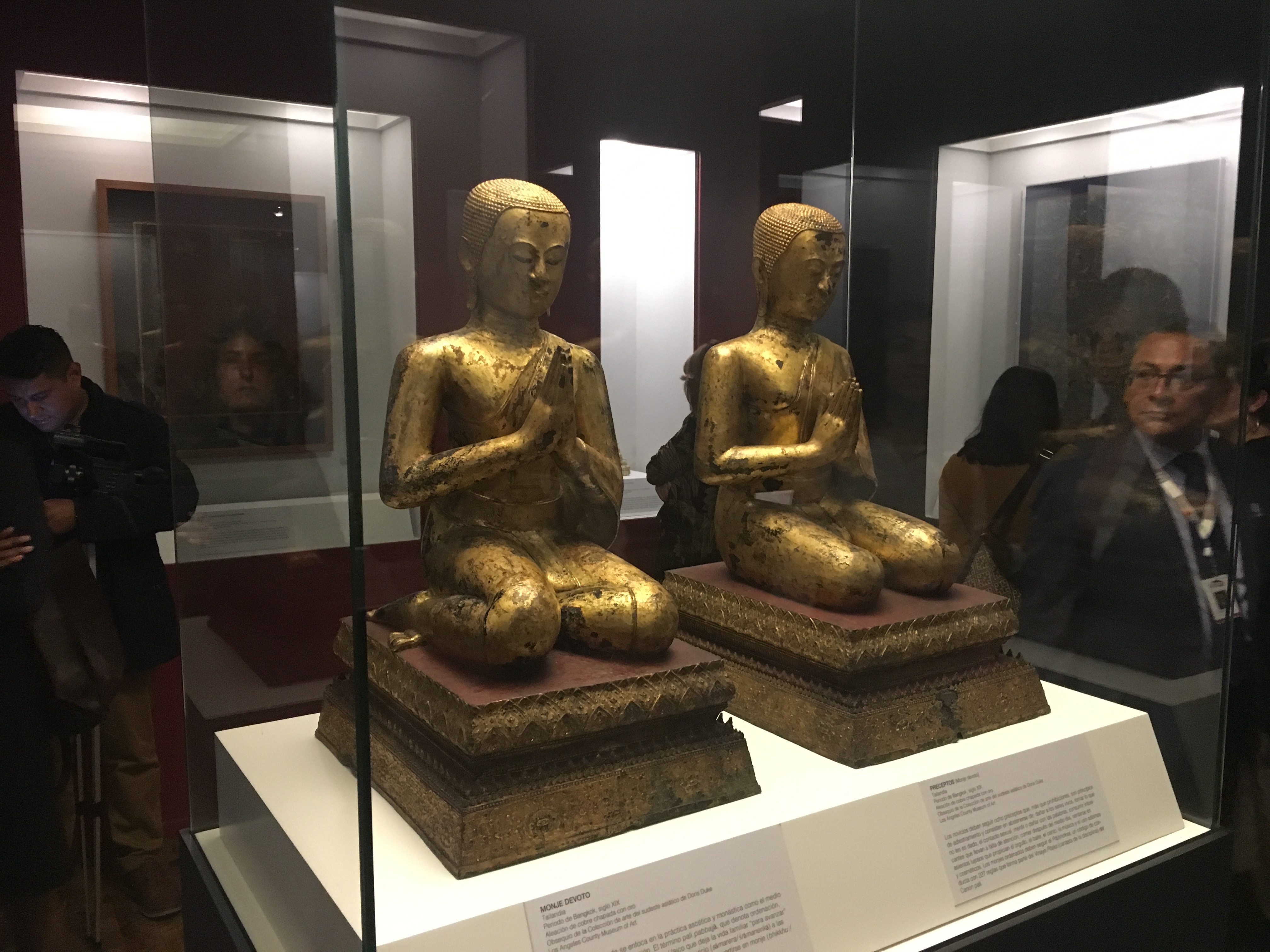On the evening of July 18 the exhibition Las Huellas de Buda (The Footprints of the Buddha), organized by LACMA curator Tushara Bindu Gude and me in conjunction with consulting curator Karina Romero Blanco, opened at the National Museum of Anthropology in Mexico City, where it will be on view through October 14. LACMA Director Michael Govan spoke at the opening ceremony, where he was joined by Mexican Secretary of Culture Maria Cristina Garcia Cepada, General Director of the National Institute of Anthropology and History Diego Prieto Hernández, Director of the National Museum of Anthropology Antonio Saborit, and other dignitaries.

This magnificent exhibition presents an international survey of Buddhism and Buddhist art, beginning with the religion’s origins in India and following its spread through mainland and island Southeast Asia (Myanmar, Thailand, Cambodia, Vietnam, and Indonesia), the Himalayas (Kashmir, Nepal, and Tibet), and East Asia (China, Korea, and Japan). Incorporating some 150 masterpieces from LACMA’s Asian art collections and several loans from the Metropolitan Museum of Art, New York, Casa Tibet México, and private collections in Mexico City, the exhibition introduces key concepts of Buddhist thought and practice viewed through the prism of rare and extraordinarily beautiful Buddhist sculptures, paintings, and ritual objects.
Las Huellas de Buda is organized thematically, exploring the life of the Buddha, the role of the bodhisattva or Buddhist savior, Buddhist cosmology, and such key concepts as dharma, karma, and nirvana. The show focuses on art associated with such key phases of Buddhism as Theravada (early monastic Buddhism), Mahayana (the “Great Vehicle”), Vajrayana (the “Diamond Vehicle”—tantric or esoteric Buddhism), and Chan (Zen).
Las Huellas de Buda is built on LACMA’s rich collections of Asian art, including 20 masterpieces of South Asian sculpture and painting from the famed Nasli and Alice Heeramaneck Collection, acquired in the 1970s. Among the finest surviving Indian Buddhist paintings and sculptures were those created during the Pala dynasty (8th–12th century), situated in northeast India. LACMA’s collection is rich in the Buddhist arts of the Pala period, including extremely rare illuminated (painted) manuscript pages on palm leaves, and sculpted images of scenes from the Buddha’s life. The show also includes rare images in stone and bronze of numerous bodhisattvas, including Maitreya (Buddha of the Future) and Tara (one of the most important female bodhisattvas), and such figures as the wrathful protector Mahakala and a rare image of a Mahasiddha, or tantric adept.
The Himalayas, including Kashmir, Nepal, and Tibet, have long been key domains in which Buddhism flourished from early times, and the exhibition highlights a group of extraordinary Kashmiri gilt metal sculptures, and Nepalese and Tibetan Buddhist paintings, several of which were once owned by the famed Italian Tibetologist Guiseppe Tucci (1894–1984). These Himalayan Buddhist paintings include illuminated manuscripts, iconographical manuals, narrative illustrations, icons, and mandalas. Tibetan paintings of arhats (original disciples of the Buddha tasked with keeping the dharma, or teaching, alive until the coming of the next cosmic time cycle or kalpa), illustrate the influence of both Indian and Chinese painting traditions on the Buddhist arts of Tibet.

A significant part of the exhibition focuses on the Buddhist arts of Sri Lanka and Southeast Asia. The spread of both Theravada and Mahayana Buddhism to mainland and island Southeast Asia is highlighted with superb examples of sculpture from Myanmar, painting and sculpture from Thailand, and sculptures from Cambodia, Vietnam, and Indonesia.
The exhibition’s exploration of the Buddhist arts of China, Korea, and Japan illustrates the flourishing of the Indian religion in East Asia starting in the first century of the Common Era. The earliest Chinese Buddhist sculpture in the exhibition is a rare sandstone bodhisattva from Yungang (Cloud Hill), the earliest major Buddhist cave temple site in China, dating to the late 5th century. Other Chinese images include a rare Tang dynasty (618–906) marble Buddha and beautiful woodblock-illustrated Buddhist texts (sutras) from the 14th and 15th centuries. Korean and Japanese Buddhist arts are also well represented in the exhibition, with sculptures, paintings, and sutras ranging in date from the Goryeo and Joseon dynasties in Korea and the late Heian (12th century) through Edo (1600–1868) periods in Japan.
Las Huellas de Buda presents a coherent conceptual framework that unites the arts of Buddhism across the enormous geographical expanse of Asia, and explores the regional variations in style and belief that characterize the evolving manifestations of Buddhist practice over the course of two millennia. After its showing in Mexico City the exhibition will travel to venues in Santiago, Chile, Austin, Texas, and Portland Oregon, with a final presentation at LACMA in 2021.



